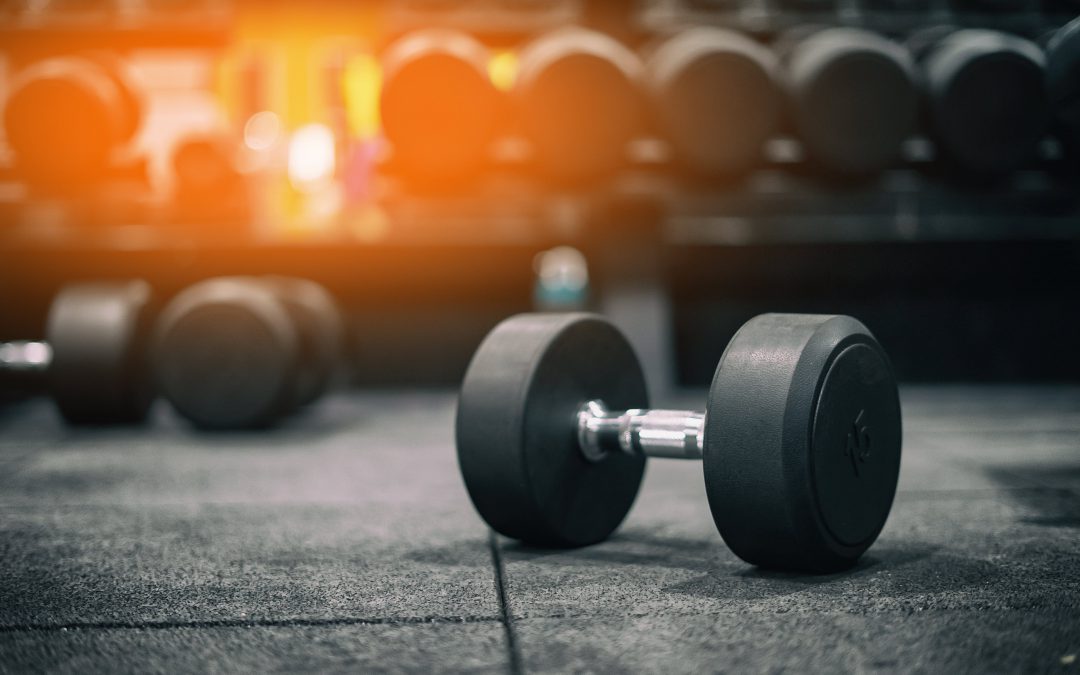This in-depth guide will provide you with all the information you need to get the most out of an exercise designed to improve strength and muscle in the shoulders and upper chest.
You’ll learn the proper form, the benefits of choosing the right incline, and the different variations you can do.
Read on, to learn how to maximise the results of your incline dumbbell press and get the most out of your workouts by performing the incline press with confidence and form.
Get ready to build a strong, muscular chest and shoulders by learning everything you need to do an incline dumbbell press the right way!
Are you an employer? Hussle now offer flexible, discounted access to our fitness venues as an employee benefit. Elevate employee wellbeing.
What is an Incline Dumbbell Press?
The incline dumbbell press has a couple of other aliases, some know it as the incline dumbbell bench press; others refer to it as the incline chest press. However they all refer to the same exercise.
The incline dumbbell press is a dumbbell version of the barbell incline bench press, using an incline bench rather than an incline bench rack. It is an effective and no-nonsense upper body exercise that focuses on the pectoral muscles in the chest, the anterior deltoids on the front of each shoulder and the backside of the arms (the triceps).
The incline dumbbell press allows for more 9or less) tension on all the above muscle groups, thanks to the adjustable angle of the bench as opposed to a basic flat bench press.
As the name implies, the exercise is all about pressing, but the incline is key when pressing up from the chest by extending the arms, with good form it can be tailored to the individual and really make a difference.
What are the Benefits of Incline Dumbbell Press?
The incline dumbbell press delivers a greater range of motion than conventional flat bench pressing.
Anyone looking to build strength and promote effective muscle growth in focused areas should have the incline dumbbell chest press in their arsenal of exercises. This is particularly true for those looking to develop the upper chest, especially the clavicular head of the major pecs.
With good form, other benefits can include equal stability across both sides of the chest, the loss of strength imbalances and increased grip strength.
What Muscle does Incline Dumbbell Press Work?
The dumbbell incline press is all about developing the upper portion of the chest and shoulders.
Flat bench presses are aimed at those looking to build mass over the whole pectoral area, incline dumbbell presses are a slightly different beast. The incline directs more of the work towards the upper pecs and the deltoids (shoulders) so caution is needed if you are planning to focus on your shoulders the following day to avoid the risk of overworking and injury.
The pectoralis major, anterior deltoids and triceps brachii are all muscles groups that incline bench presses will work on. This might not be too different from the flat bench press; however it is the angle of incline that leads many to choose the dumbbell incline press as the one for them.
The Best Angle for Incline Dumbbell Press
The angle of incline for this exercise is important and should always be set to get the balance right for the workloads your shoulders and pecs take on.
High Incline
A high incline of around 60 degrees is common for a lot of people. This will shift the focus downwards through the mid-section of the upper chest. That may be what some people want because for many, the reason why they do incline dumbbell presses in the first place is to target the upper chest and shoulders.
A 45 degree angle solves this to some degree, adjusting the incline lower means greater comfort for many although for others it might still not be optimal.
Low Incline
A lower incline of around 30 degrees is generally considered to be the optimum angle to target the upper chest. To some this might seem a small angle but it is the proper form to balance the workload between the upper pecs and the anterior deltoids.
It is easy to fall into the trap of setting the angle too high if you are looking to target the upper chest while avoiding too much shoulder work.
It’s important to remember a very high incline of 90 degrees would primarily target the shoulders; a completely flat variation would hit the middle chest. This helps many people decide on the right incline for them.
How to Change the Difficulty of Dumbbell Press
Dumbbell press is more challenging than the barbell version as both arms are working hard independently to balance and stabilise their own weights.
Increasing the weight pressed is one obvious way of upping the difficulty, but this has to be done with caution. Always build towards the weight you hope to press to avoid the risk of injury and never compare the weight you happily lift when barbell pressing, these are two completely different exercises.
Paying just as much attention to the negative return of the dumbbells is good form. Many people might focus on the press on every rep, that is the hardest part after all, but control on the way back down to the chest is just as important and can increase the challenge.
Many find it a challenge to lift weights in a higher incline; then again many others find a lower incline too easy. Don’t be afraid to experiment until you find the right incline for you. Just remember that a change in incline will also affect the areas of the chest and shoulder you work on.
If you are unsure, always start at 30-45 degrees.
Incline Dumbbell Press Variations
The incline dumbbell press has several variations, here are the most popular:
Barbell Incline Press
By far the most widely used variation, the dumbbell incline press; combined with the right angle of incline can be an effective and steady way to build the upper chest and shoulders.
Kettlebell Incline Press
Incline bench presses can be done with kettlebells.
Many people find this more comfortable as the weight being pressed lies lower than where it is actually held. This may not strengthen grip as much as conventional a dumbbell incline press but the battle against gravity can really have an impact.
Single Arm Incline Press
This variation is performed with a single arm to address balance and muscular strength issues on one side of the upper body while engaging the core.
This incline press variation is done by lowering one dumbbell to the side of your chest before pressing back to the starting position for the desired number of reps and changing sides.
Common Mistakes to Avoid
Caution is needed when selecting the weights for incline dumbbell presses, too much can lead to the risk of injuring shoulder joints. The golden rule is always to start lighter and build up towards more challenging weights. Never compare a barbell weight you might comfortable press and use that weight as your starting weight for incline dumbbell pressing.
For those who might not see the results they want over time, thinking about a lower or higher incline can make a big difference and should always be looked at before changing the weights you press.
Conclusion
The incline dumbbell press is an effective way to address imbalances, improve grip and deliver results in the upper chest and shoulder areas. The incline has a positive impact on chest growth and for the majority of people, should be around 30 degrees.
The incline dumbbell press may not be as easy as the flat variation, but that angle makes all the difference by targeting the areas you want to work on.
Give the incline dumbbell press a try the next time you hit the gym and feel the difference for yourself!



